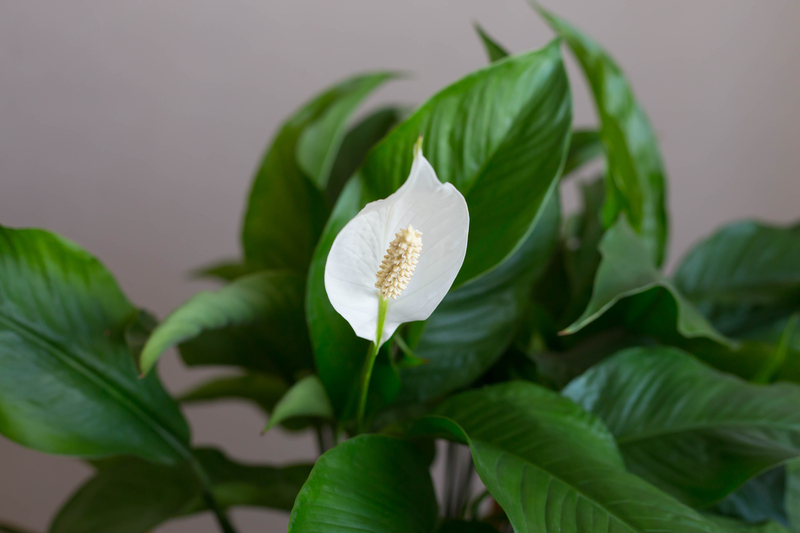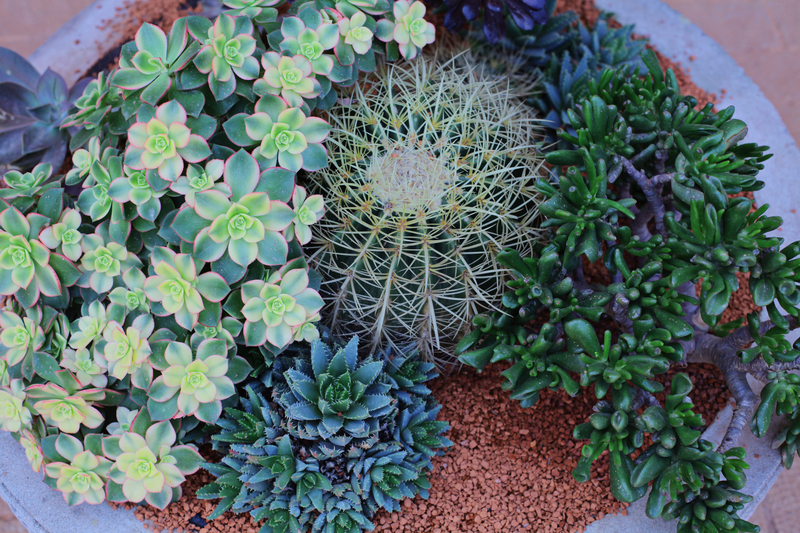The Ultimate Guide to Vertical Gardening Success
Posted on 13/06/2025
The Ultimate Guide to Vertical Gardening Success
Are you looking to transform your urban space into a lush, productive oasis? Vertical gardening might be the answer. Whether you have a small balcony, a modest backyard, or just a blank wall with potential, mastering vertical gardening can revolutionize how you grow plants. In this comprehensive guide, you'll discover everything you need for vertical gardening success--from choosing the right plants to creative design ideas and expert maintenance tips. Let's climb to new heights together!
What is Vertical Gardening?
Vertical gardening is a technique of growing plants upward rather than outward, using structures like trellises, towers, stacked planters, or wall-mounted pockets. This innovative approach makes the most of limited ground space, letting you cultivate more greenery--even where horizontal gardening isn't feasible. It's a perfect solution for urban gardeners, apartment dwellers, and anyone wanting to maximize their garden yield.
- Saves space: Ideal for tight areas and urban settings.
- Improves air quality by adding more foliage to your environment.
- Reduces pests as plants are off the ground.
- Enhances aesthetics with living walls and green screens.

Benefits of Vertical Gardening
Unlocking the advantages of vertical gardens can transform your living space and your health. Here's why more people are turning to upward gardening:
1. Maximizing Space Efficiency
With vertical growing systems, even the tiniest corners become productive. You don't need acres--a single wall or balcony railing can house a flourishing mini-farm or flower display.
2. Enhanced Plant Health
Plants grown off the ground are less prone to soil-borne diseases and pests. Improved air circulation helps foliage dry quickly after watering or rain, reducing the risk of fungal infections.
3. Improved Accessibility
No more crouching or kneeling! With vertical gardening setups, you can tend to plants at eye level, making gardening easier for all ages and abilities.
4. Thermal Regulation
A vertical garden acts as a natural insulator. On external walls, lush greenery helps keep your home cooler in summer and warmer in winter--a win-win for energy savings.
5. Aesthetics & Privacy
A living wall becomes a breathtaking focal point in any yard or balcony, and can also serve as a natural privacy screen from neighbors.
Choosing the Right Vertical Garden System
There are many types of structures and products available for vertical gardening. Here's a roundup to help you select the best fit:
- Trellises & Obelisks: Perfect for climbing veggies like cucumbers, beans, and peas.
- Wall Planters & Pockets: Great for herbs, strawberries, or succulents inside or out.
- Stacked Containers: Modular systems for flowers, greens, and compact root crops.
- Living Walls: Engineered panels for indoor or exterior walls, often with integrated irrigation.
- Pallet Gardens: DIY upcycled wooden pallets filled with soil and plants--eco-friendly and affordable.
- Tower Gardens: Vertical hydroponic systems for growing salad greens and herbs rapidly.
Consider your available space, sunlight, budget, and chosen plants when deciding the right setup for your garden.
Best Plants for Vertical Gardens
Selecting the right plants is essential for vertical gardening success. Here are some prime candidates:
Edible Plants
- Herbs: Basil, parsley, mint, oregano, thyme, rosemary
- Leafy Greens: Lettuce, spinach, arugula, kale
- Fruiting Plants: Cherry tomatoes, strawberries, chilies, dwarf beans
- Climbing Vegetables: Peas, pole beans, cucumbers, small squash varieties
Ornamental Plants
- Flowering Annuals: Petunias, nasturtiums, lobelia, pansies
- Trailing Plants: Ivy, pothos, tradescantia, sweet potato vine
- Succulents: Sedum, echeveria, sempervivum (especially in dry, sunny spots)
- Ferns: Maidenhair, Boston fern, bird's nest (ideal for shaded or indoor walls)
Pro tip: Look for compact or dwarf varieties and plants with shallow root systems, which thrive in confined, vertical spaces.
DIY Vertical Gardening: Creative Ideas for Every Space
Vertical gardens can be as simple or elaborate as you like. Here's how to get creative with your vertical garden design:
Pallet Planter
- SOURCE or upcycle a wooden pallet.
- Sand and treat the wood as needed to avoid rot.
- Staple landscape fabric to the back and bottom to contain soil.
- Fill with potting mix and your choice of plants.
- Lean the pallet upright against a wall or securely fix it.
Shoe Organizer Herb Garden
A cloth shoe organizer, hung on a wall or fence and filled with soil, becomes a practical and eye-catching vertical herb garden.
Vertical Bottle Gardens
Recycle plastic bottles by mounting them horizontally or vertically on a board or fence--fill with soil and trailing flowers or salad greens!
Living Picture Frames
Create a piece of "living art" using a shallow frame and succulents. These frames can hang indoors as a unique botanical statement.
Setting Up Your Vertical Garden: Step-by-Step Guide
Success with vertical gardening starts with proper setup. Follow these essential steps:
- Choose your location--Assess the light exposure and climate. Most edible plants require 6-8 hours of sunlight.
- Select an appropriate system--Adapt to your space, skill level, and budget.
- Prepare your support--Install trellises, racks, or wall mounts securely.
- Use quality soil or substrate--A lightweight, nutrient-rich potting mix is best.
- Install smart irrigation--Drip or soaker systems help maintain even moisture, especially in larger or indoor gardens.
- Arrange plants for optimal growth--Place sun-lovers on the upper levels and shade-lovers (or those prone to drying out) below.
- Monitor and adjust--Check moisture, prune regularly, and replant or feed as needed for continuous lushness.
Caring for Your Vertical Garden
Maintaining your vertical garden ensures success all season long. Here's how to keep your wall of green thriving:
Watering
Vertical gardens dry out more quickly than traditional gardens. Use:
- Drip irrigation or soaker hoses for even distribution
- Water-retaining crystals or mulch on exposed soil
- Frequent light watering instead of heavy, infrequent soakings
Feeding
Plants grown in vertical systems exhaust nutrients quickly. Use:
- Liquid fertilizers every 2-4 weeks
- Slow-release granules mixed into the soil
- Organic compost teas for a natural boost
Pruning and Harvesting
Regularly trim and harvest to encourage bushier growth, prevent overcrowding, and keep your vertical garden looking its best.
Pest and Disease Control
Growing vertically reduces pest problems, but be vigilant for:
- Aphids and spider mites (use soap sprays as needed)
- Powdery mildew (improve air circulation and reduce crowding)
- Inspect leaves regularly--prune off affected areas promptly
Top Tips for Vertical Gardening Success
- Start small--Experiment with one or two structures before scaling up.
- Group plants with similar needs (light, moisture) together for best results.
- Secure structures--Make sure your garden is safely anchored, especially in windy areas.
- Rotate crops--This helps prevent soil-borne diseases and nutrient depletion.
- Monitor for signs of stress--Yellowing leaves or stunted growth signal adjustments are needed.
Frequently Asked Questions About Vertical Gardening
Q1: Can I grow a vertical garden indoors?
Absolutely! Small indoor vertical gardens thrive with herbs, ferns, or even salad leaves. Prioritize access to sunlight or augment with LED grow lights.
Q2: How do I prevent water from dripping down the wall in an indoor setup?
Install a catch tray below your vertical structure, and use pots or modules with built-in drainage solutions. Opt for self-watering wall planters for ease.
Q3: What's the best soil for vertical gardening?
A lightweight, well-draining potting mix enriched with compost or slow-release fertilizer is ideal. Avoid heavy soils that compact and impede drainage.
Q4: How often should I water my vertical plants?
Check daily in hot weather--vertical planters dry out faster than ground gardens. In most cases, they need a light watering every 1-2 days.
Q5: Can I use vertical gardening for flowers?
Definitely! Many annuals and perennials, especially trailing varieties, are perfect for creating a cascade of blooms on vertical surfaces.

Inspiring Vertical Garden Ideas
- Herb kitchen walls: Fresh flavors within arm's reach for home chefs.
- Balcony privacy screens: Use lush vines or stacked pots to create a green enclosure.
- Focal point living wall: Mix textures and colors for dramatic style indoors or outdoors.
- Children's salad garden: Grow snackable veggies at eye level for kids -- engages and educates.
- Succulent art: Living frames that double as air purifiers and conversation starters.
Conclusion: Achieve Vertical Gardening Success--Grow Up, Not Out
Vertical gardening offers a world of possibilities for all gardeners, regardless of space restrictions. By carefully selecting the right setup and plants, ensuring proper care, and implementing creative design ideas, you can transform any wall, fence, or corner into a thriving green masterpiece. Embrace the upward trend--your journey to vertical gardening success starts today!

